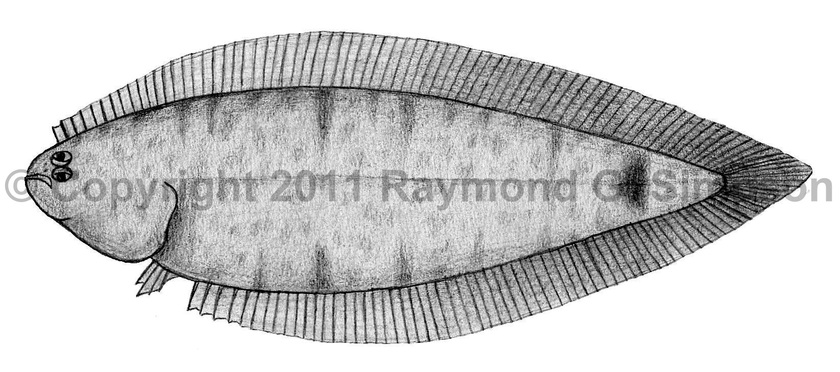
Common Name
Largescale Tonguefish
Year Described
Ginsburg, 1951
Identification
Dorsal Fin Rays: 69-81
Anal Fin Rays: 55-64
Pectoral Fin Rays: none
Pelvic Fin Rays: 4
Caudal Fin Rays: 10
Longitudinal Scale Rows: 55-67
Vertebrae: 41-44
Pterygiophore pattern (1st three interneural spaces): 1-4-2
Other diagnostic characters include: well developed pupillary operculum, membrane ostia present on dorsal and anal fin, ocular side premaxilla with teeth on anterior half or 3/4, teeth on entire margin of dentary, ocular side of lower jaw without fleshy ridge, and scales absent on blind side of dorsal and anal fins
Color
Light brown to pale yellowish with faint mottling or indistinct faint crossbands. A dark blotch is present anterior to the caudal fin. Peritoneum unpigmented. Dorsal and anal fins body colored, darkening posteriorly, without spots or bands. Base of caudal fin dark. Blind side pale without melanophores.
Size
Most adults from 40-60mm. Maximum size to 78mm.
Habitat
Inner continental shelf from 18-170m (mostly 20-60m), over live bottoms.
Range Map

Range
From NC to S. Florida and the eastern Gulf of Mexico. Vagrants collected in the Gulf Stream up to Nova Scotia.
References
Munroe, T.A. 1998. Systematics and ecology of western Atlantic tonguefishes (Symphurus: Cynoglossidae: Pleuronectiformes). Fish. Bull. 96(1):1-182.
Munroe, T. A. 2003. Bothidae (Pp. 1885-1895), Scophthalmidae (Pp. 1896-1897), Paralichthyidae (Pp. 1898-1921), Poecilopsettidae (Pp. 1922-1923), Achiridae (Pp. 1925-1933), Cynoglossidae (Pp. 1934-1959). In: Carpenter. 2003. The living marine resources of the Western Central Atlantic v. 3.